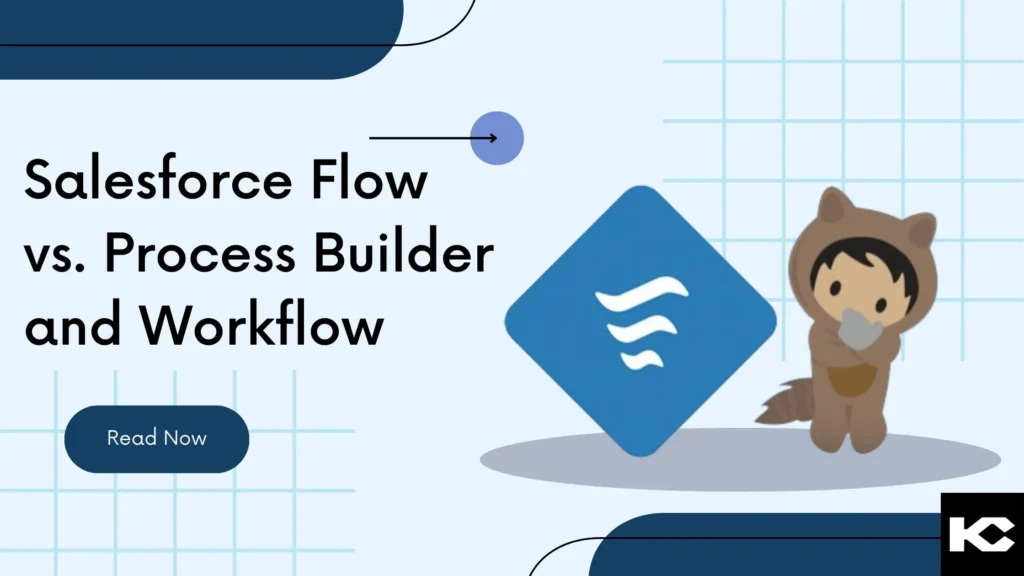Salesforce Flow vs. Process Builder and Workflow [2024]
Salesforce has long provided powerful tools for automating business processes, with Workflow Rules and Process Builder serving as the mainstays for many organizations. However, as the complexity and demands of modern businesses have grown, Salesforce has introduced Flow, a more robust and flexible automation tool that is quickly becoming the standard. This blog will explore Salesforce Flow vs. Process Builder and Workflow Rules, and why Flow is considered the future of Salesforce automation.
Workflow Rules: The Foundation of Salesforce Automation
Workflow Rules have been a reliable tool for automating basic tasks in Salesforce for years. They work on a simple “if/then” logic, allowing users to automate actions like sending email alerts, updating fields, and creating tasks. However, Workflow Rules are limited in scope and flexibility. For example, they cannot create records or update related records, and they only allow one action per rule, which can be a significant constraint for more complex business needs.
Process Builder: A Step Up in Complexity and Functionality
Process Builder was introduced as an advancement over Workflow Rules, offering a more visual and user-friendly interface for building automation. It allows for multiple actions to be triggered by a single event, and it can handle more complex logic with branching criteria. Process Builder also supports a wider range of actions, including creating records, posting to Chatter, and calling Apex code. However, as businesses began to push the limits of what Process Builder could handle, its limitations became apparent, particularly in terms of performance and scalability.
Salesforce Flow: The Future of Automation
Salesforce Flow is a powerful tool that combines the capabilities of both Workflow Rules and Process Builder, while also offering advanced features that neither of the older tools can match. Flows can automate almost any process within Salesforce, from simple tasks like updating records to complex logic involving multiple objects and external systems. They can also be triggered by a wide range of events, including changes to records, scheduled times, and platform events.
One of the key advantages of Flow is its flexibility. Flows can be designed to include screen elements, allowing for user interaction, or they can run entirely in the background. This makes them suitable for a wide range of use cases, from automating internal processes to creating customer-facing applications. Additionally, Salesforce is continuously enhancing Flow, closing the feature gaps that existed between Flow and the older tools, and providing a clear migration path for users of Workflow Rules and Process Builder.
Checkout our blog on Salesforce Flow Limitations
Why Salesforce Flow is the Way Forward?
Salesforce has announced plans to retire Workflow Rules and Process Builder in favor of Flow, signaling a shift towards a more unified and scalable automation platform. Businesses that continue to rely on the older tools should consider transitioning to Flow sooner rather than later. Not only will this ensure continued support and access to new features, but it will also enable organizations to take full advantage of Salesforce’s most powerful automation tool.
Ready to make the switch? Start exploring Salesforce Flow today and see how it can transform your business processes.




